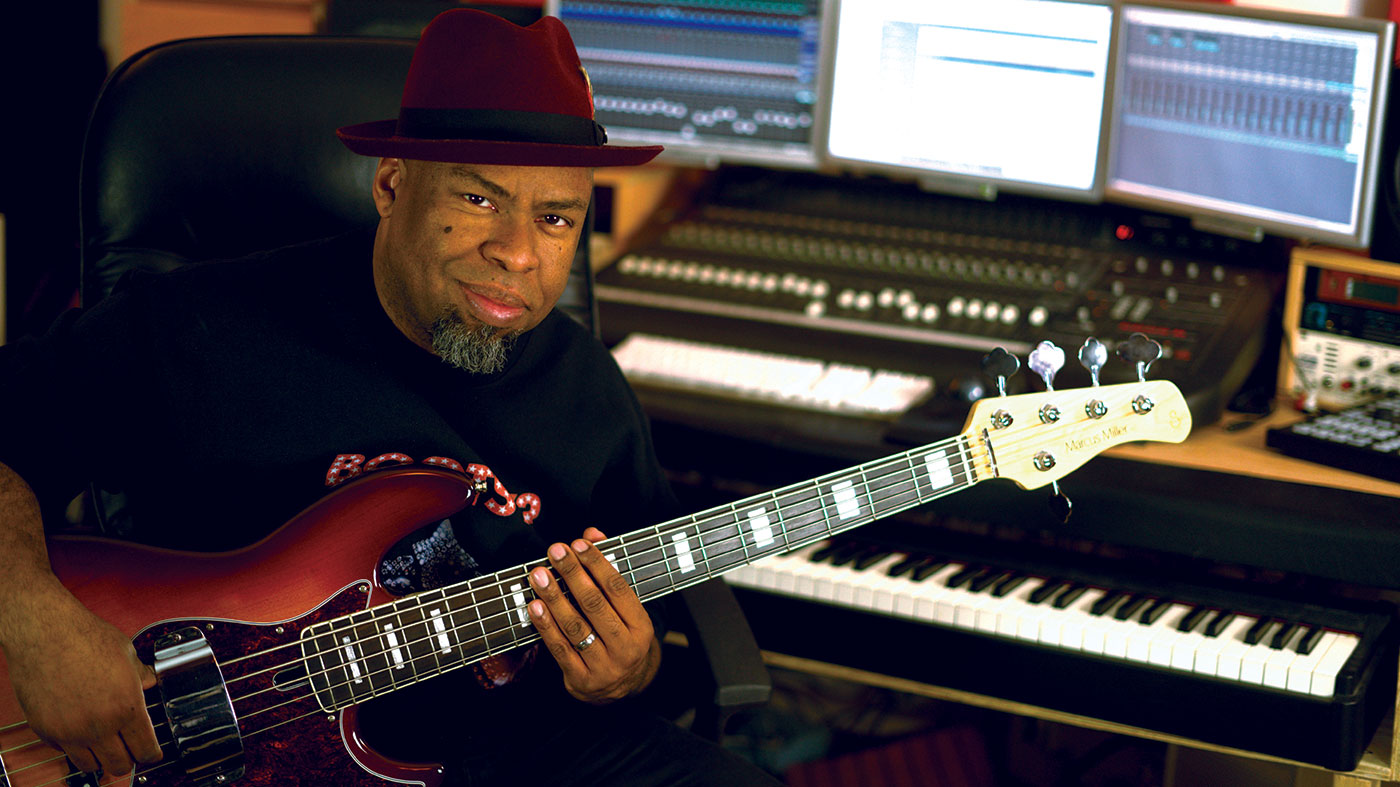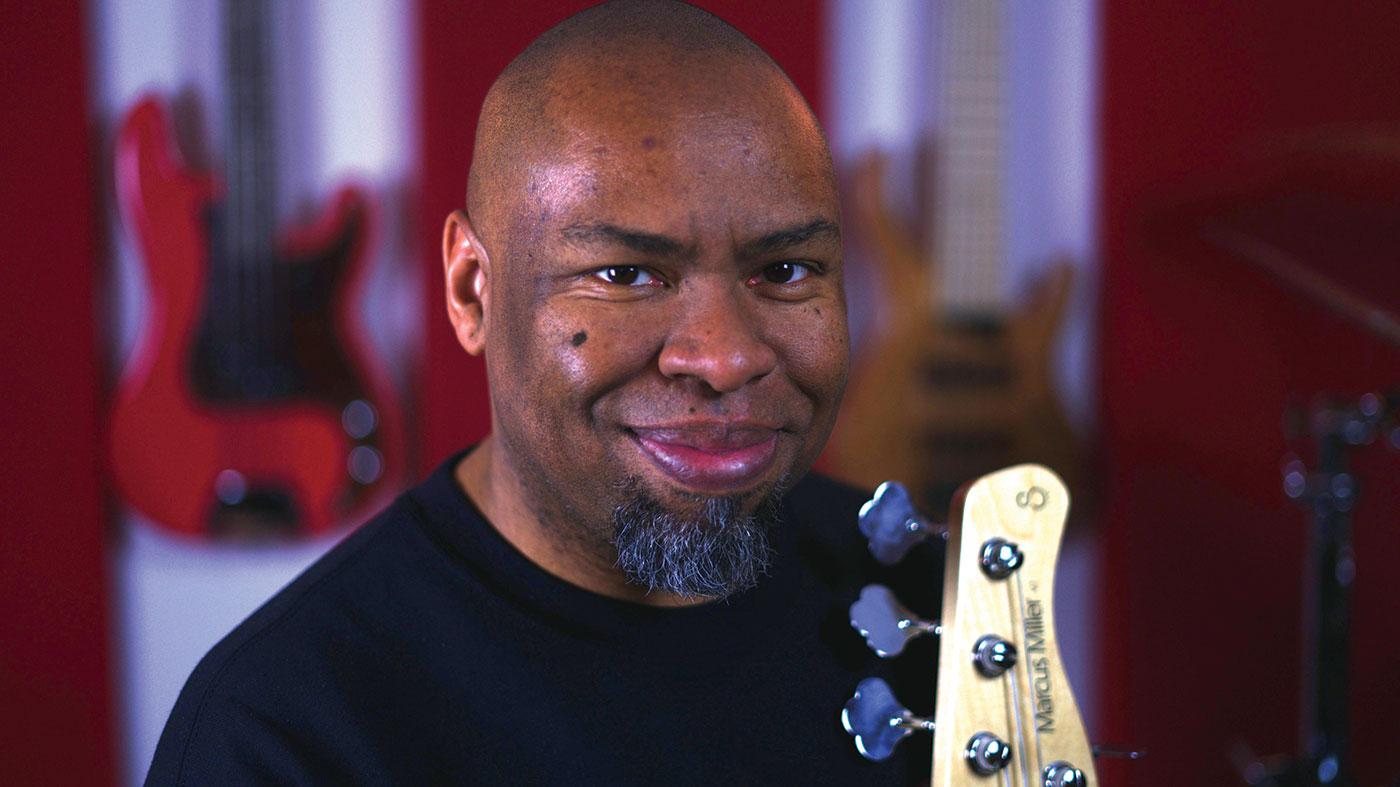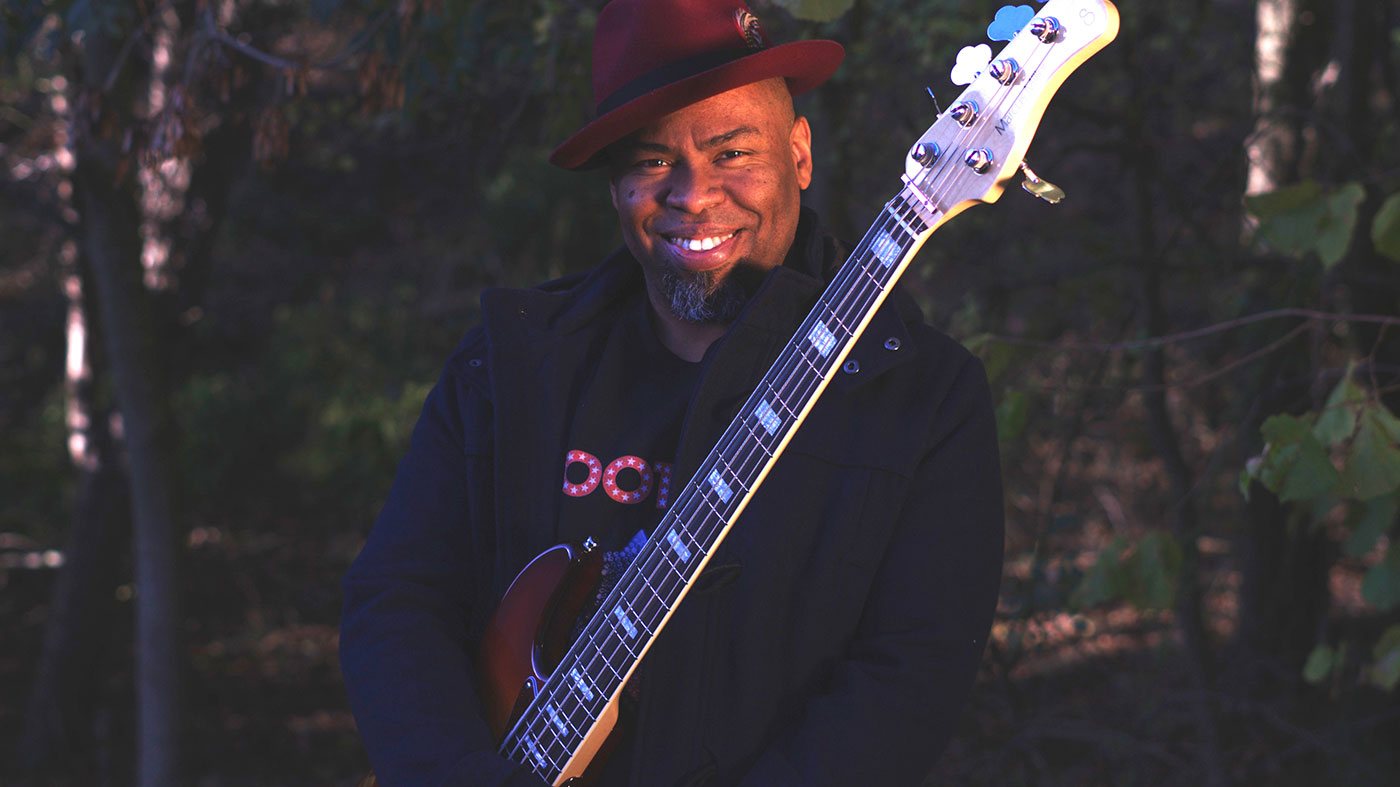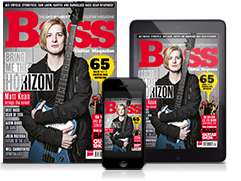Dean Mark: “There were a lot of jam nights. I went to them all! If I could get up and play, I would”
The session bass whiz reflects on his rise through the ranks

The esteemed stage and session bassist Dean Mark looks back on his way up from youth theatre and jam nights to the biggest funk and pop gigs on the planet.
If there’s one lesson that we can all take away from the story of Dean Mark, London-based bassist extraordinaire, it’s that getting out there and playing is the best way up and out.
Jamming whenever the opportunity arose and impressing contacts with the energy of his performances and slick funk of his bass parts, he travelled a long way in a short time - from jazz clubs with Roy Ayers to arena tours with Craig David. Let’s hear it...
What are you up to at the moment, Dean?
This was the mid-80s, when Prince was at his peak, and when I watched the Sign O’ The Times video, I was like ‘Where’s that guitar?’
“I’ve just finished a series of dates with D’Influence and I’ve been playing gigs with the British Collective, a supergroup which features the cream of UK-based soul and funk musicians. We recently played five nights at the Boisdale in Canary Wharf. I have a party band too, Reel Deal, for weddings and other events. I’m lucky enough to do what I enjoy.”
How did your career as a musician begin?
“It all started with my grandmother. When I was eight or nine, she asked an aunt of mine, who had an acoustic guitar that she never played, to give her guitar to me. I hadn’t done anything musical at that point; she just had an intuition that I, the middle child of five kids, would be the one to take an interest in music. So I had some guitar lessons at school and learned a few chords, but I dropped it for a few years because I was an actor and discovered theatre.”
Get the MusicRadar Newsletter
Want all the hottest music and gear news, reviews, deals, features and more, direct to your inbox? Sign up here.
What got you back into music?
“This was the mid-80s, when Prince was at his peak, and when I watched the Sign O’ The Times video, I was like ‘Where’s that guitar?’, haha! I needed to get close to music again, and it snowballed from there.
“Around 1992, a cousin of mine, Ishmael, who played everything, was looking to start a band. He already had a really good guitarist so he taught me to play some easy bass parts. It just clicked, and I stuck with it. Within a year of really working on it, I got good.”
What were your first gigs?
“There were a lot of jam nights in London back then. At one point you could go out and play pretty much any night of the week, because there was always somewhere you could go and sit in. I went to them all! If I could get up and play, I would. People asked me to come and play with them, and it all went from there.”

Miller time
When did you turn professional?
“In 1994 I was spotted at a club called WKD in Camden by a jazz flautist called Phillip Bent, who had just done an album on GRP Records. He asked me to play some shows with him, which was huge for me. That was my first artist gig. His music was influenced by Miles Davis’s Marcus Miller period, so I was immediately learning that kind of bass playing. Pure funk and soul, which I listened to anyway. It was an amazing start.”
Did you ever meet Marcus?
My first ever tour was Brazil [with Boy George]. All I’d done was little jam sessions in London, and suddenly there I was, playing in South America!
“I did meet him - he was at the side of the stage at a gig I did in Germany. Of course, it can be stressful having your hero watching you play, but you have to tune that out.
“One time, I was doing a gig with a saxophonist called Mike Phillips, who was at the O2 in London doing Prince’s 21 Nights tour in 2007. We were playing at a club called Pigalle, on stage with the horns from the New Power Generation, and Prince came to one of the shows. I knew he was there, and of course he’s the absolute reason why I became a musician, but I couldn’t be thinking about that at the time. I just had to tune him out and focus on Mike and the music.”
Who else influenced you as a bass player?
“James Jamerson, of course, who was the bass player that originated modern soul and funk music. He was the Bible of groove. In terms of how I insert fills into grooves, Anthony Jackson was a serious influence on me. When I record, my biggest influence is Nathan East, a recording genius. His approach is incredible.”
What gear did you use back then?
“I had a Hohner four-string that had a detuner at the bridge, and later a five-string version of that bass, with a Trace Elliot head and a Peavey 4x10 cab. That cab was cheap, and heavy, but I didn’t care because it was loud! I beat the hell out of it.”
What came next?
“At another jam night I got spotted by Boy George’s MD, John Themis. George’s bass player Winston Blissett was unable to make a tour at the time, so John asked me to do the dates. He didn’t even ask me to audition. It was a tour of Brazil - my first ever tour. All I’d done was little jam sessions in London, and suddenly there I was, playing in South America!
“That was a great experience, especially working with someone who I’d listened to when I was a kid. I was 10 years old when Do You Really Want To Hurt Me was in the charts. The first time we played that song, George was sitting next to me, but fortunately I was able to control my nerves thanks to the training I’d had at the theatre as a kid.”
Would you recommend that kind of training for bass players?
“Definitely. I’d been acting in youth theatres since I was 14, and I continued until I was 22. It taught me a lot about performance and discipline, which translated directly into playing bass live on stage.
“For me, they were the same thing, because in both environments, the stage was home. That’s why I found it easy to play at jam sessions, because I’d been used to getting up and improvising or performing from a script. I would absolutely recommend that training for musicians.”

Legends of soul
Tell us about playing with Roy Ayers.
“I was a really big fan of Roy - I mean a really obsessive fan! - and in January 1993 I went to see him play at Ronnie Scott’s, three times in three weeks. When I saw those gigs, I made the conscious decision that I wanted to be a musician. His bass player, Donald Nicks, had a five-string bass, which was the first time that I’d seen one. It was like a mushroom cloud that went off in my head.
“Then, in September 1995, I got a call from Ray Gaskins, Roy’s sax player, who was doing a solo project. He said ‘I’ve heard some things about you, and I need you on this gig. You’re the guy’..I instantly said yes. The first gig I did was in Ascot with Ray, his cousin - who happened to be Jocelyn Brown! - and Kym Mazelle. Legends of funk and soul, all of them.”
How do you approach a gig of that calibre?
I went from doing jazz gigs to arenas full of screaming people - a totally different world!
“I studied the hell out of that music, believe me - another discipline straight from the theatre. With acting, you’ll sit down and learn a script until it’s perfect, and you do the same thing with music. Ray loved what I did and told me the gig was mine as long as I wanted it. We went on to do loads of jazz festivals in Europe.”
What basses were you playing at this point?
“By now I was playing a Yamaha BB five with Bartolini pickups, because I was firmly a five-string player. I had a deal with Elites strings at the Bass Centre too, which was fantastic. Before that point I was boiling my strings! That’s a dangerous game, because you never know when they’re going to pop.”
How did the Roy Ayers gig come about?
“Ray was doing dates with Roy in between his own gigs, and at one point I said ‘You know that I know Roy’s stuff, right? Do you think you could persuade him to use your band?’ and Ray called Roy. 20 minutes later, he called back, told me that Roy loved the idea - and that was it. I was Roy Ayers’ bass player!
“In that band, I was with funk royalty, playing with his drummer Dennis Davis, who had played with David Bowie among others. It was an immensely privileged position to be in for a guy from south-east London. I played with Roy for about two years.”
What came next?
“In 2000 I was called by Frank Tontoh, the drummer, to go and play with Craig David, where he was the MD. Frank had just finished playing with George Michael. Craig was after a bassist who could also play synth bass, which I’d been doing with Don Blackman, so that helped to get me the slot. This was just when Walking Away and Seven Days and Craig’s other hits were in the charts, so I went from doing jazz gigs to arenas full of screaming people - a totally different world!
“It was different bass playing as well; I’d been able to open up the groove with Roy, but with pop music you have to nail the parts exactly. We went all over Europe and to America.”
That must have been quite an experience...
“Haha, yes! I remember Anastacia and Britney Spears and Justin Timberlake came to see us play. The one experience that sticks out most was at the House Of Blues in LA, where we played a few nights.
“At one show, Jennifer Lopez was there; Beyoncé was there; Janet Jackson, Missy Elliott and Queen Latifah were there... and on the third night, I remember my energy was a bit down because we’d been on the road for three weeks and I was tired. I was playing, and I looked down at a little roped-off section in front of the stage. I saw a guy there with shades on, really getting into the music and moving his head from side to side... and I realised it was Stevie Wonder. I was like, ‘Frank! Frank! It’s Stevie Wonder!’ and suddenly the energy of the band went right up. I’ll never forget that experience. That will stay with me forever.”
Did your grandmother get to see you make it as a musician?
“Yes she did. She got to see me on TV and at gigs, which was great. I owe her so much.”


“I’m beyond excited to introduce the next evolution of the MT15”: PRS announces refresh of tube amp lineup with the all-new Archon Classic and a high-gain power-up for the Mark Tremonti lunchbox head
“These guitars travel around the world and they need to be road ready”: Jackson gives Misha Mansoor’s Juggernaut a new lick of paint, an ebony fingerboard and upgrades to stainless steel frets in signature model refresh



![PRS Archon Classic and Mark Tremonti MT 15 v2: the newly redesigned tube amps offer a host of new features and tones, with the Alter Bridge guitarist's new lunchbox head [right] featuring the Overdrive channel from his MT 100 head, and there's a half-power switch, too.](https://cdn.mos.cms.futurecdn.net/FD37q5pRLCQDhCpT8y94Zi.jpg)





